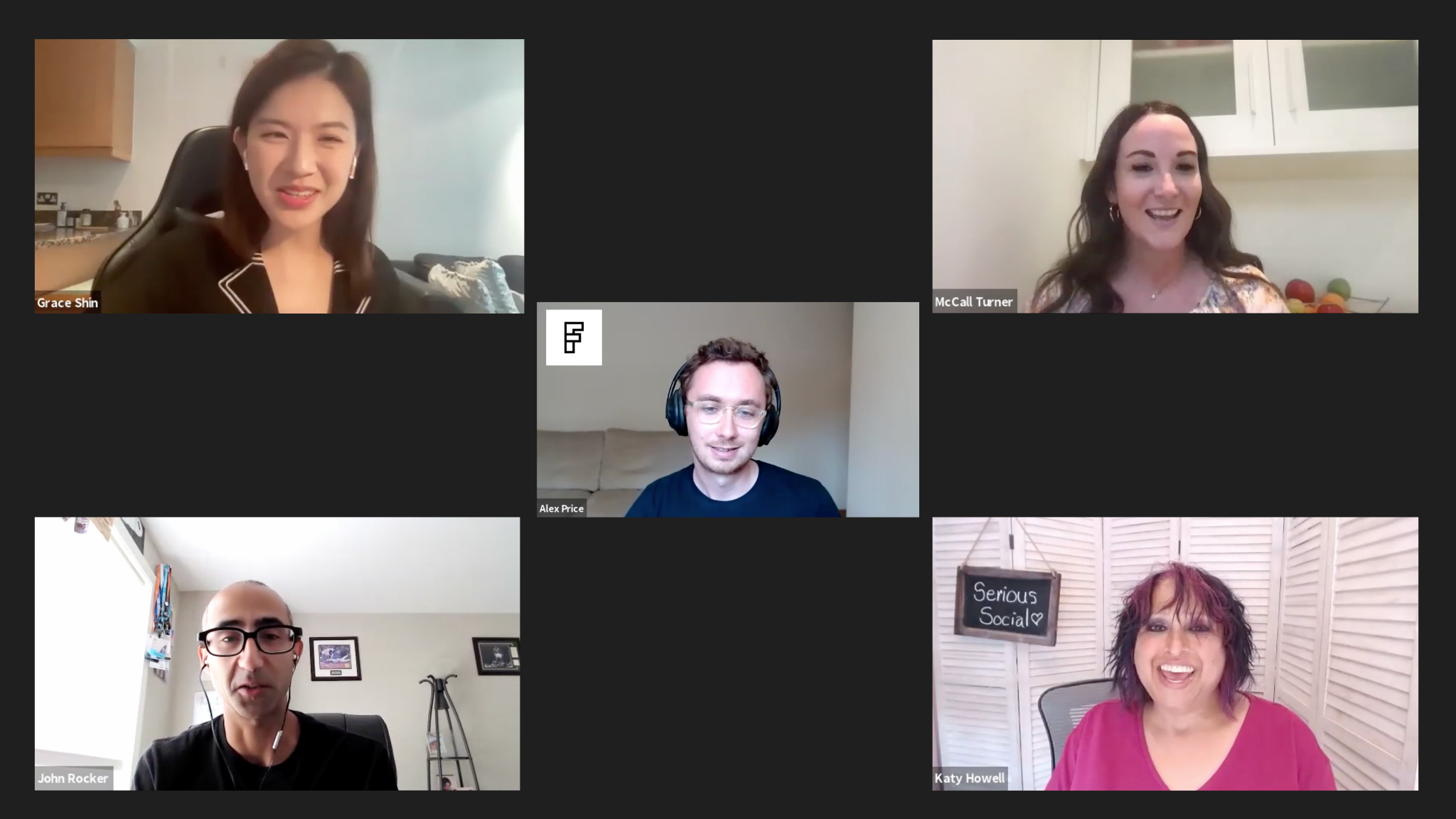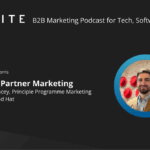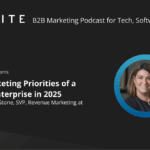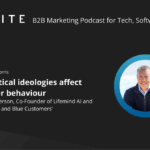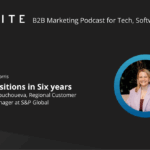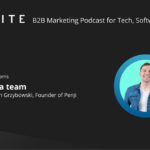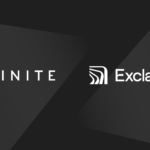FINITE have just watched a fantastic group of social media experts discuss their deep insights into generating an effective social media strategy.
A big thank you to our amazing B2B social media experts:
Katy Howell, CEO at immediate future
John Rocker, Social Media Manager at Dynatrace
McCall Turner, Social Media Marketing Specialist at Miro
Grace Shin, Senior Global Digital Marketing Manager EMEA & APAC at Medallia
FINITE members get access to the full discussion. If you’re a B2B tech marketer and not a member yet, apply for a free membership here.
Alex kicked off the discussion with a question specific to social media for startups:
He asked: What are the unique differences in social media strategy for a startup compared to a global enterprise?
McCall answered on behalf of startup marketers, due to her experience in hyper-growth at Miro – a collaborative whiteboard tool. She said that for startups, social media is an opportunity to bring people into a community and to learn from your audience to find out what they want.
If you’re in a team of one, you’ve got to be passionate about what you’re doing, to self-motivate yourself for success.
How can social media humanise a B2B brand?
Alex assessed that B2B buyer journeys are, if anything, more emotional than B2C ones. So how does social media play a role in nurturing B2B buyer emotions through humanisation?
Katy had two main points:
- Empathy – social media teaches you how to understand the buyer, and not just their pain points. Social media can give you psychographic insights around attitudes, culture, values – emotional aspects of thought and life and decisions people makes as consumers.
- Hyper personalisation – social media allows you to push past the point of corporate coldness and get deeper into a buyer’s psyche by showing them what they want.
Social media should be informed by insight, not intuition. Everything should be led by the data. For example, intuition might tell you the best social media channel for B2B tech marketers is LinkedIn, but that’s not always the case.
Katy hypothesised that a lack of field events may have sparked B2B marketing’s deeper interest in social media as a channel. B2B marketers are looking to break the social boring and stand out with a hard focus on social media as an approach to brand building and short term ROI.
Katy noted that on social media, B2B brands are no longer just fighting within their categories. Instead, they’re fighting against everything on our feeds, from the football to the weather.
The world on social media is vast. How can you differentiate between a global and local social media strategy?
Grace has experience building both global and local social media strategies, so she had lots of advice for differentiating the two:
A global strategy focuses on general aspects as it delivers a universal message and is less targeted and relevant to individuals. Whereas local strategies engage with characteristics, culture and preferences in reference to local commonalities.
Finding a balance is key – maintain brand consistency but at the same time consider local trends.
E.g. logo and corporate colour should not be changed, but models you use in images can differ. Product or company news should be consistent whereas industry and general topics can have more flexibility.
In terms of channels and pages, it’s better to have one global calendar so everyone can collaborate across regions. Having lots of pages for every region can diminish continuity and release control, so if individual teams want to launch their own profile, there should be a process beforehand to ensure teams can maintain it to a high standard.
If you’ve got lots of regional channels, you need frameworks regardless of who is posting. You should be pushing, training, encouraging and teaching people to learn what matters to their audience.
Alex fed a question from the Q&A chat: how can social media encourage employee advocacy?
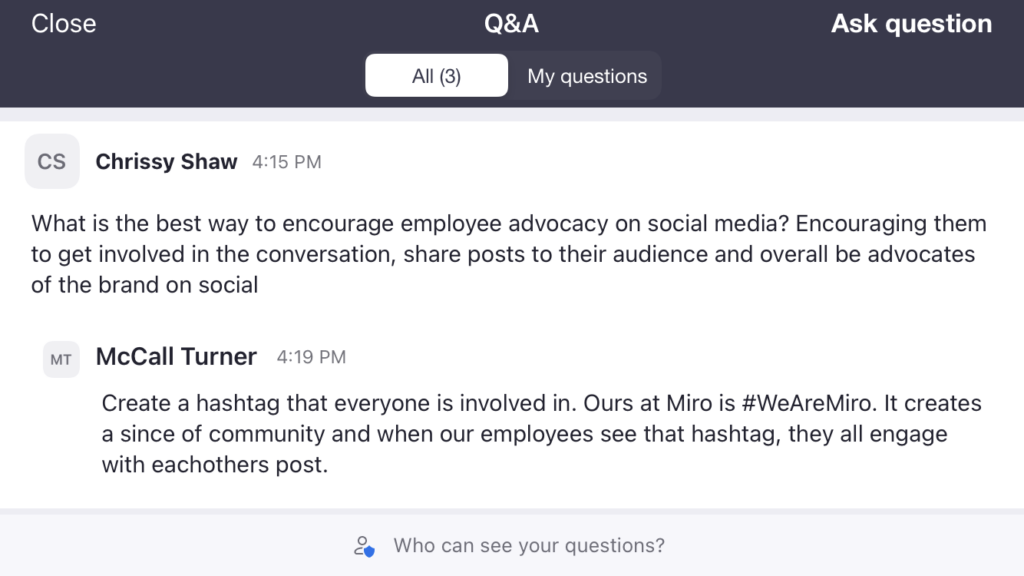
Everyone on the panel had plenty to say on the topic of employee advocacy: it’s a great starting point for building a social media presence, as colleagues have a great network and are more influential than company pages.
The panel had plenty of tips for employee advocacy:
- Give employees guidelines on captions, but don’t write them yourself! This leaves room for them to add their own authenticity.
- People expect a tone from individuals, so encourage them to be themselves. Employee networks don’t want to be upsold on something or something corporate, they want to hear from people.
- Create a hashtag for your company that everyone can be involved in. When employees see that hashtag they know to engage with that and it builds a sense of community.
- You can use third party platforms such as PostBeyond to maintain your employee advocacy programme.
- Show employees the effect that their engagement is having to encourage them to continue.
- Send an email blast to the team with a competition for who can share with their social media network.
John mentioned that employee advocacy on social media can be a big key to recruitment. Some of the panellists have seen a direct correlation of people sharing content, to people having their first touch point and turning into employees.
Some great insights into social media today! What about the future of social media as a B2B channel?
As a CEO of a leading B2B social media agency, Katy had a lot of insight into where B2B social media is heading next:
- People are going to pay way more attention to social listening and data using tools like brandwatch or GlobalWebIndex, which allow you to understand how your customers are thinking.
- There’s a robust case for slowing down. It’s not all about getting the most content out there, we need to slow down and put out quality content.
- To break your content up, start thinking about sequential storytelling. You have to find different angles, not just repeat the same thing over and over again.
- B2B influence is not just for Kardashians. B2B influencers are rising in popularity and use as a tool to connect with an audience.
- Forget LinkedIn, C-suites are on Facebook looking at top of funnel content. When you think about it, they don’t need LinkedIn because they’re not looking for a job. Think about how you’re interrupting someone on their social media. Are they looking at pictures of their grandchildren? Scrolling through memes? It needs to be relevant and fit in.
- Pay to play if you want to target. You’ve got to invest in ad space to reap the rewards.
The time flew by! Alex asked a question from the audience: What should your B2B social media KPIs be and tools to measure?
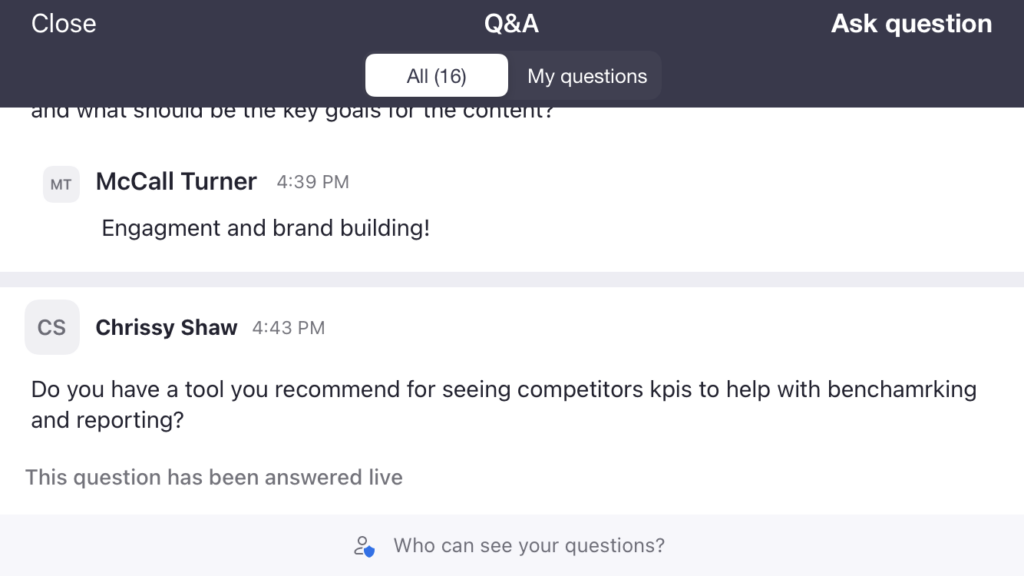
In an early stage startup it’s all about brand building. Make sure your audience knows who you are and what you stand for.
For larger companies, KPIs can be surface such as follower growth, activations and conversions, benchmarking against competitors and ROI.
You can use social media tools such as Sprinklr or SproutSocial, or you can manually analyse competitors yourself.
The full online discussion is available to watch back free for all FINITE members. You will find a link to it on our Slack under the ‘announcements’ channel.
If you are not a member, but would like a copy of the discussion, apply for a free FINITE membership!
